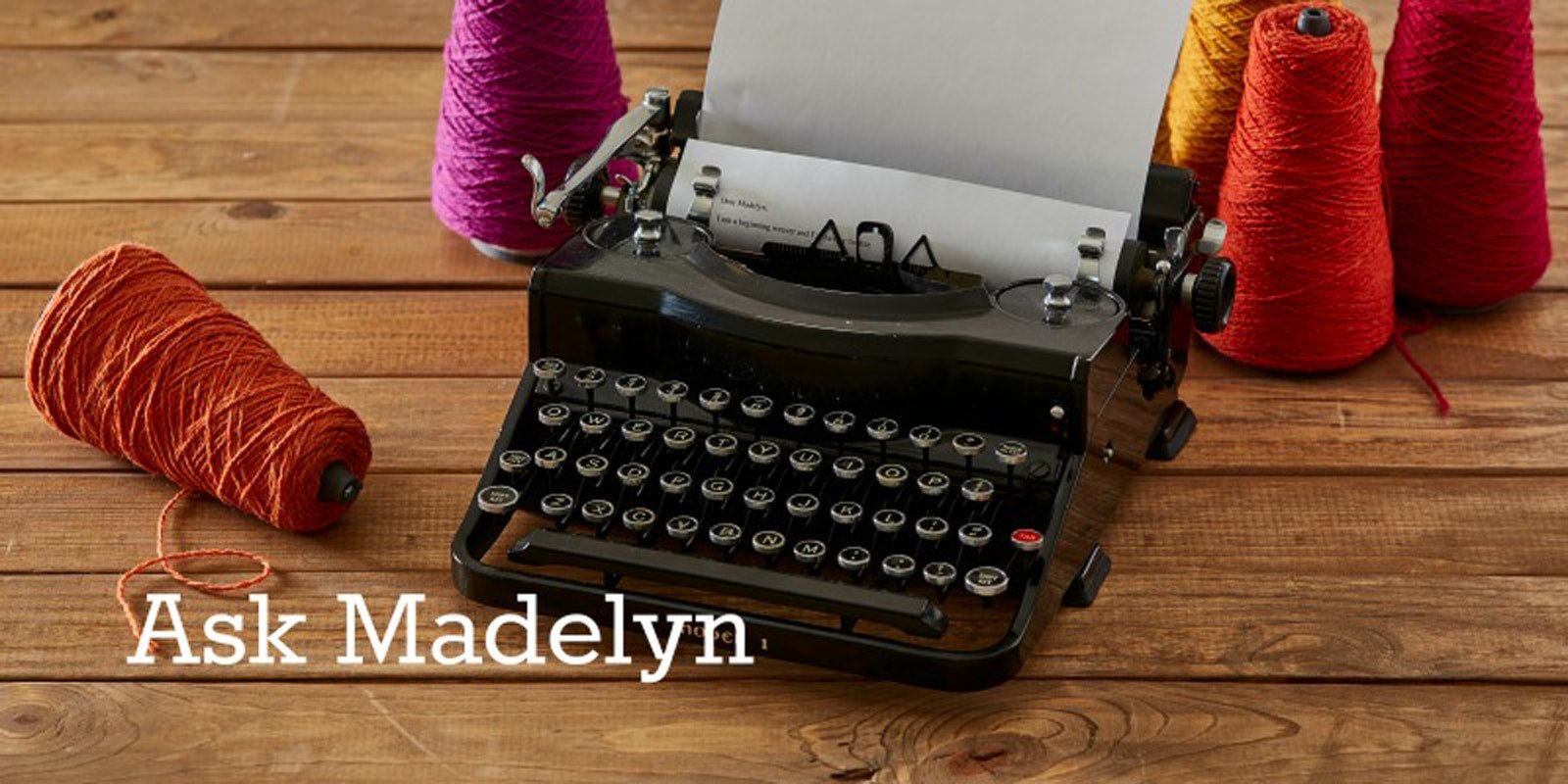Hi Madelyn, Do you have any tips regarding keeping threads in order when sleying 2 or more threads per dent? I tend to get many crossed threads! —Angela
Hi Angela!
There are essentially two ways and neither is pretty. But both are better than suffering through endless disentangling during beaming.
Transfer the cross (you need three lease sticks for this). Leave the original two lease sticks in the cross when you sley the reed. After the threads are sleyed, you will move the cross with lease sticks to the heddle side of the reed for threading. Put tension on the ends of the threads hanging from the reed and turn the lease stick that is just on the other side of the reed on edge to open a shed. Put a third lease stick in the shed opening on the heddle side of the reed. Remove the stick that made the shed and move the second lease stick up next to the reed. Again putting tension on the threads on the heddle side, open a shed with the second lease stick and stick the first lease stick in this opening on the heddle side of the reed. Remove the second original lease stick. Thread the heddles from the two lease sticks now in place.
The tricky part of this method is to get enough tension on the threads to make the opening through the reed. A helper really helps.
Divide the reed into sections vertically. Tie a string (or strings) across the reed that separate it into divisions, as many as threads in each dent. Then when you sley, you put the first thread through the bottom section, the second through the next section (in the same dent), the third in the next, etc. Each dent will have threads in sections stacked on top of each other. When you thread, for each dent you take the bottom thread first, the thread in the second section next, etc.
The tricky part of this method is seeing where each thread is coming from.
On the whole, I prefer method 1 because the not-pretty part is over more quickly.
-Madelyn
If you have a weaving question please email Madelyn! View related & recent "Ask Madelyn" posts!

